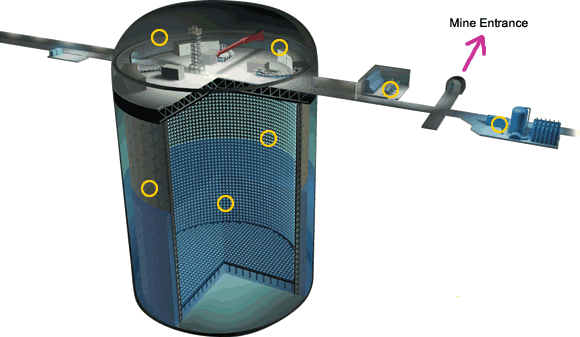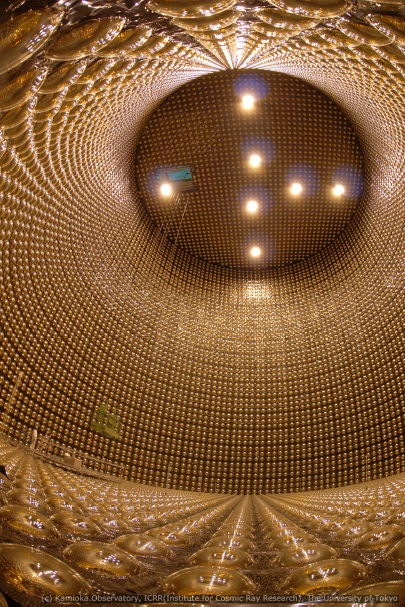| Introduction | to | the | Super_Kamioka_Neutrino_Detection_Experiment |

Super-Kamiokande is a 50,000 ton water Cherenkov detector. |
| Super-Kamiokande started observation in 1996 after 5 years of construction. The detector is used in cooperation with about 100 researchers from 30 collaborating institutes in Japan, the USA, Korea, China, Poland and Spain. Currently, the detector is used as the far detector of the T2K Experiment and keeps watch for supernovae in the Milky Way Galaxy. |

From an analysis of a 33.0 kiloton-year exposure to atmospheric neutrinos, the Super-Kamiokande Collaboration announced Evidence for oscillation of atmospheric neutrinos in 1998. This was the first strong experimental evidence supporting the theory that neutrinos have non-zero mass. |
| Determination of solar neutrino mixing parameters: S.Fukuda et al.Super-Kamiokande Collaboration,"Determination of solar neutrino oscillation parameters using 1496 days of Super-Kamiokande I data" Phys. Lett. B539, (2002), 179-187. |
|
Determination of best limits on proton decay: H.Nishino et al.Super-Kamiokande Collaboration, "Search for Proton Decay via p --> e+ + π0 and p --> μ+ + π0 in a Large Water Cherenkov Detector" Phys. Rev. Lett. 102 no.14, (2009) 141801. |
| Determination of best limits on supernova relic neutrinos: M.Malek et al.Super-Kamiokande Collaboration "Search for supernova relic neutrinos at SUPER-KAMIOKANDE" Phys. Rev. Lett. 90 (2003) 061101 K.Bays et al.Super-Kamiokande Collaboration "Supernova relic neutrino search at super-kamiokande" Phys. Rev. D85 (2012) 052007 |
| Determination of best limits on solar anti-νe: Y.Gando et al.Super-Kamiokande Collaboration "Search for anti-nu(e) from the sun at Super-Kamiokande I" Phys. Rev. Lett. 90 (2003) 171302. |

